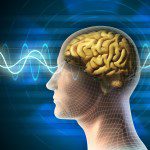EMDR is one of the most amazing treatments I have ever seen. I truly LOVE it.
The research says it works for around 80% of people. I’d probably say that number was slightly higher. So the success rate is pretty impressive.
Changing negative beliefs (and the associated feelings) can take a long time with regular psychological work. Processing with EMDR is like doing that work at warp speed.
If you’ve done any psychological work you know that you can work hard to gain insight into what happened to you and why you feel as you do. You work hard to change your thoughts and your reactions to triggers. Even though you get better and better at these skills, you’re often left with the body sensations – your head knows you shouldn’t believe these things about yourself (you’re not good enough, don’t deserve, not safe) but deep down inside you don’t. EMDR changes this.
Best of all EMDR can be used at any stage of the Heal. Grow. Transform. process.
Heal: Reprocess Traumas
EMDR can be used for reprocessing past memories that continue to haunt us. Let’s say you have a really scary car accident and you’re afraid to drive. Or you were abused as a child and still feel the world is unsafe and people can’t be trusted. These memories get stored differently in your nervous system so the memory stays vivid and the emotions very strong.
EMDR unlocks these memories from your nervous system and allows your brain to start the process of healing itself. This happens very quickly – warp speed! I’m talking you can achieve in a 90 minute session what it could take months or even years to accomplish with regular ‘talk therapy’.
Now you can see why I love it so much.
But wait……. there’s more…
Grow: Learning Skills and Changing Behaviours
When we’re learning new skills it helps to have a template of our new behaviour. EMDR can help build that template. In a similar way to Transform, we can build positive templates for the changes you’re initiating.
Let’s say you’re wanting to change the patterns in a relationship. We might build a template for you soothing yourself (if you tend to fear rejection) or of you becoming more comfortable with intimacy (if you find that difficult).
We can even build some positive internal resources for you. Maybe you didn’t have a lot of encouragement growing up. We can build in an Inner Coach – an internalised someone who gives you the encouragement and advice you crave.
Fun huh!
Transform: Performance & Life Enhancement
EMDR can also be used for performance and life enhancement.
 So if you have some big event coming up that you want to be at your best for, or you just want to function at your optimal level then you can use EMDR to build positive templates, reduce anxiety around your performance, and banish things like procrastination, self-sabotage, and fear of failure.
So if you have some big event coming up that you want to be at your best for, or you just want to function at your optimal level then you can use EMDR to build positive templates, reduce anxiety around your performance, and banish things like procrastination, self-sabotage, and fear of failure.
So versatile!
EMDR Works!
EMDR is considered Best Practice for PTSD (Post Traumatic Stress Disorder). This is a big call. Therapies have to undergo a lot of research to reach this level. So even though the treatment itself might seem a little kooky (you follow a light back and forth) there is plenty of evidence to say that EMDR works wonders on stuff that is notoriously hard to treat.
And if you’re more interested in the performance side – EMDR is used extensively with Olympic Athletes, Performance Artists, and High Achieving Business People.
What’s the Process of EMDR?
- Assessment: we will need to work out what your triggers are and what maladaptive beliefs have formed. This will take a minimum of 2 -3 sessions (or more if there’s a lot of Heal to do) depending on the level of your past ‘stuff’.
- Preparation: we work on building your emotional resilience. You will learn some Mindfulness skills (this makes the processing work better and faster), and anything else that will help build your internal resources. This can take 1 session if you already have these skills. How many sessions it takes if you don’t will depend on you and how much you practice outside our sessions.
- Processing: this is where the fun starts. These are double sessions (see the Fees and Rebates page for costs). You follow a light bar and you miraculously feel better. Ok – there’s more to it than that but that’s what it can feel like. The number of processing sessions will depend on how fast you process and how much ‘stuff’ we’re processing. You will have an idea of how many processing sessions you will need after the Assessment phase.
- Consolidation: some people may need some future template work, others will just need a final session to wrap it up, talk about the changes and look at how they’re going to get on with their lives. Some people may need to learn some different ways of being in the world, which would then take us into the therapy realm. You will know where you fall in the early stages of the process so there will be no surprises for you
How EMDR Works
This is one of the harder questions to answer but there are plenty of theories. One of them is that EMDR is an Information Processing therapy. When you have experiences that are associated with strong emotions, information is stored differently in the brain. Apparently there are 3 components – the ‘this happened then that happened’ part of the memory, the emotions we felt, and the meaning we make of it all. When all these components are taken care of the memory gets stored away and doesn’t cause us any trouble.
When the components don’t get taken care of properly we can have all sorts of problems with feeling things like fear with no apparent trigger or having really vivid images of the memory that elicit the same feelings as they did at the moment the orginal event happened. We might also make like ‘the whole world is unsafe’ when in reality it was just at that moment that things were unsafe.
So……EMDR unlocks something in your brain so you can put all the components together in a healthy way. Apparently the eye movements mimic REM sleep (where we do all our dreaming and processing of things that have happened to us). But instead of our brains being free to conjure up images of us flying or breathing underwater or being 5 like we would in normal dreamy REM sleep, we’re focusing on the memory that hasn’t been properly processed and we’re processing that.
So very quickly all the components come together and we can be free from the distress we previously experienced.


